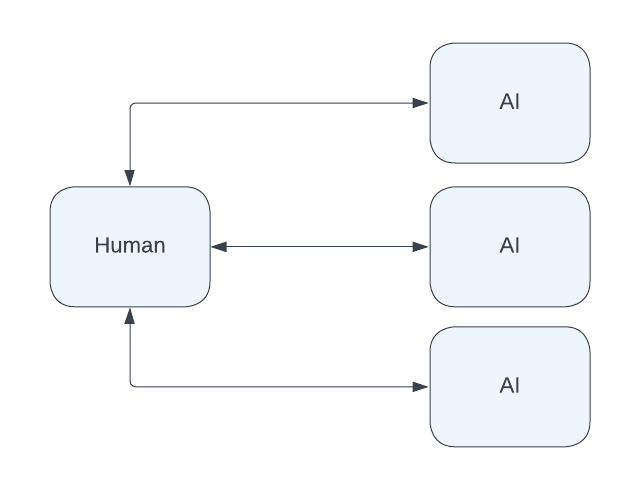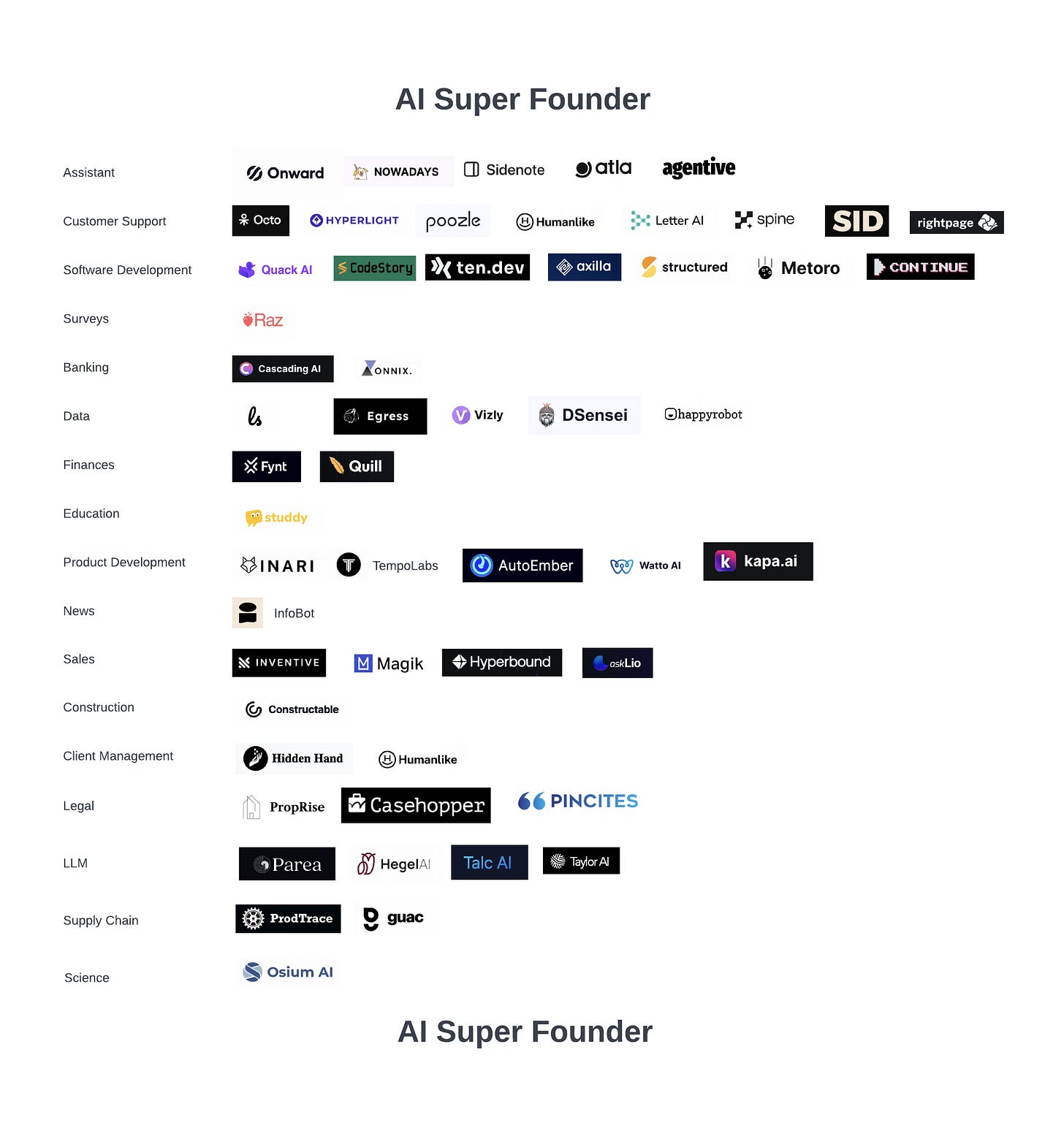Build Something AI Wants
What does AI need?
“Make something people want” - Y Combinator’s motto
A new potential market segment is opening for a new type of customer: AI itself
If we assume AI will take over tasks from humans, what tools, skills, and integrations will the AI need to do so? To go further, what will an AI need to go above and beyond what a human could?
Now that AI exists, new feature requirements will surface to meet the needs of AI (as a user). For example, if I spin up a personal AI Agent Assistant and ask it to help me evaluate the state of my inbox, to suggest and execute the next steps, it may come up with a list of tasks:
Identify any urgent outstanding emails to follow up on
Draft follow-ups for unread email
Coordinate time slots for a meeting
Identify spam and block the sender
etc.
For each of these tasks, my AI Agent Assistant may attempt do to the task, but what if it could tap into expert services to do the task even better? Taking each of the email tasks above, I can imagine at least 1 specialized service for each:
You can imagine the same type of feature expansion for various everyday tools if the user is an AI, instead of a human.
State of AI tools
At first glance, it appears that everyone is in a race to build AI solutions for humans, “Co-Pilot for X”. Naturally, this augments human tasks 1-to-1, like scheduling a meeting, creating a logo, drafting a blog post, or spinning up a landing page.
Looking at YCombinator’s last batch they have backed over 50 AI startup that falls in this category:
ChatGPT Plugins are perhaps the best example of an AI that brings various third-party tools together in a single thread. For example, in this Tweet, Paul Covert demonstrates how to spin up a startup with three plugins in the loop: landing page generator, logo generator, and market researcher.
Future of AI tools
I think we won’t only build AI tools for humans. AI is now a customer too.
Same as humans
As a start, we can assume AI wants the same things as humans to operate in a human world. Referring to the YC company map above, AI will also want a way to do:
Schedule meetings
Making human-like calls
Process and interpret data
Do customer support
Market research
Cold sales outreach
Create surveys
Debug code
Label expenses
Call customers
Negotiate contracts
Create landing pages
Develop MVPs
etc.
At the moment, humans are the filter for any work that the AI does. However, if you can take the human out of the loop, AI-to-AI interaction will unlock even more powerful capabilities.
Unique needs for AI
So what does AI need?
Naturally, AI Agents need local skills or tools to do tasks:
Browse and scrape the internet
Submit forms
Authenticate with services
Format images: crop, copy, paste, resize, edit
Format text: text, html, markdown, JSON
Coding scripts
etc.
Very quickly we realize that these skills may require more specialization, especially if they benefit from aggregated data sources, proprietary tools, human intelligence, or perhaps human intervention.
Aggregated data sources
As highlighted in the email example above, by having a central database record of spammers, it is easy for the AI to quickly validate if a suspicious email is indeed spam. Other examples of central data sources may be related to fraud detection, product catalogs, consensus, salaries, etc. While many of the data sources already exist in API format, with AI as a user, new potential use cases emerge.
Example: Data sources and personas
Let’s say I ask my AI Assistant to do market research on a new product launch. It may identify a task to define personas and conduct interviews to get a simulated response. A more accurate outcome would be if my AI Assistant consulted a specialized service that can craft personas based on public data in my target region.
Proprietary tools
Phone calls with unique voices are a great example of a proprietary tool that an AI could use. It would not be viable for my own AI Assistant to finetune the perfect voice for a cold call or customer inquiry.
Example: Perfect cold call voice
Humans have biases and as a result, not all voices and accents will deliver equal success rates for cold calls. Imagine a service for AI cold calling that specializes in selecting the most suitable voice and accent to improve the odds of success.
Example: Website builder
Another example is perhaps creating landing pages. A landing page generator like LampBuilder is in a better position to learn what call-to-action format works best for different stages of a startup’s lifecycle. It may also be better geared to conduct automated A/B tests to learn what copy and layout works best.
Human intelligence
The AI will need a feedback loop to know if it is in line with human expectations. Integrity, empathy, morality, and emotional intelligence - these are all human-like qualities where an AI will need guidance in some scenarios.
Example: Integrity check
Imagine a specialized service that keeps track of all expectations that have been set through formal communication channels and agreements within an organization. Its goal is to make sure all commitments are met and maximize the integrity and reputation of the organization.
Human intervention
Delivering a package, inspecting an Airnb, building a house, replacing a tire, etc. all require humans to physically do the task. Obviously, the AI is not able to do these tasks itself, but it could outsource it.
Example: Ask a human
Perhaps you are running an Airbnb and your AI Assistant is managing all the check-ins/outs. Obviously, the AI won’t be able to clean the house itself, so it needs a human to do the cleaning inspection. On the flip side, it may be needed to ask another human to do a quality inspection.
Infrastructure for AI market
If we step back for a moment, we’ll notice that an AI will need high-level capabilities to interact with other AIs for this new market to become viable:
Search and evaluate third-party AI tools to use
Activate third-party AI tools
Pay for third-party AI tools
Integrate with third-party AI tools
Measure the performance of third-party AI tools
Adam Silverman and Alex Reibman are working on a marketplace for AI Agents, staf.ai as well as tools to evaluate and benchmark AI Agents, agentops.ai. This is an interesting combination of products that could become an AI Agent Marketplace and bring us one step closer to AI-to-AI interactions.
This AI Agent list is effectively potential customers for things AI wants…
Conclusion
The idea that AI wants something is fascinating. At the moment it is still difficult to imagine exactly what an AI wants, but I can see glimpses of a new potential marketing opening up.
By building things AI want, we get a step closer to creating an AI Super Founder 😎







